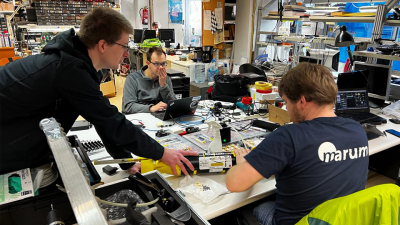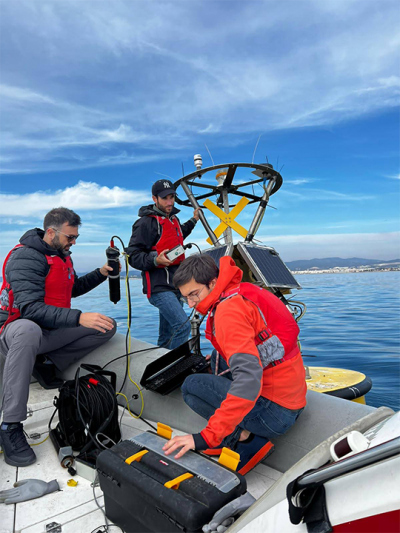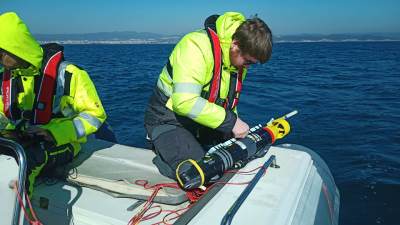- Home
- Discover
- Archive News
- News 2023
- EMSO TRIPLE VTest
Efficiently combining mobile and stationary observation platforms
To this end, a field measuring campaign took place last week in Spain, four kilometers off the coast of Barcelona to be precise, at the permanently installed OBSEA observatory. As part of the "TRIPLE - Vtest" project, scientists are using a miniaturized autonomous underwater vehicle (AUV) and artificial intelligence (AI) to extend and complement measurements from the existing observatory. This alone is a sound and much-used method in marine research.
The innovation that the planned experiment is expected to bring is related to the application of recently developed methods and technologies. More specifically, with a dedicated AUV that allows for easy deployment and retrieval along with a robust control and mission planning system. Based on such a versatile and reliable system, it will be investigated how the data collected at OBSEA can be complemented by measurements within a radius of up to ten kilometers around the site of the facility. From these measurements, new observation strategies will be derived, which will lead to a more comprehensive picture of the Eastern Spain/Catalonia region and similar sites.
Another aspect to be investigated is the extent to which measurements at a particular site are representative of processes that are evolving on a local, regional, or global scale. An assessment of this question is only possible if one has a precise knowledge of the observations collected over a long period of time in the past.
Dr. Christoph Waldmann, who initiated the project at MARUM, says: "The results of the field measuring campaign will be used to develop a concept of how mobile and stationary observation platforms can be combined as efficiently as possible. In the future, miniaturized autonomous underwater vehicles will play an increasingly important role in observation programs, for example for measurement campaigns in the polar regions. At MARUM, a new type of this AUV hardware is currently being developed as part of the TRIPLE-nanoAUV project."
As coordinator of the field campaign, MARUM has received funding from EMSO, the European Multidisciplinary Seafloor and Water Column Observatory, to carry out the field campaign. On site, the team from Bremen and Aachen receives technological and logistical support from the OBSEA regional team.
Further information
Project site TRIPLE-nanoAUV
EMSO report on the measurement campaign
Contact
Dr. Christoph Waldmann
Marine Technology
MARUM - Center for Marine Environmental Sciences at the University of Bremen
Phone: +49-421 218 65606
Email: [Bitte aktivieren Sie Javascript]
Website
Maximilian Nitsch
Institute for Control Engineering,
RWTH - Rheinisch-Westfälische Technische Hochschule Aachen, Germany
Phone: +49 241 80 28074
Email: [Bitte aktivieren Sie Javascript]
Website


Participating institutions
- MARUM - Center for Marine Environmental Sciences, University of Bremen, Germany
- UPC - Universitat Politècnica de Catalunya, Spain
- RWTH - Rheinisch-Westfälische Technische Hochschule Aachen, Germany



